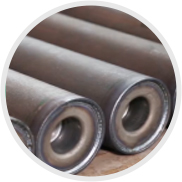 Afrikaans
Afrikaans  Albanian
Albanian  Amharic
Amharic  Arabic
Arabic  Armenian
Armenian  Azerbaijani
Azerbaijani  Basque
Basque  Belarusian
Belarusian  Bengali
Bengali  Bosnian
Bosnian  Bulgarian
Bulgarian  Catalan
Catalan  Cebuano
Cebuano  Corsican
Corsican  Croatian
Croatian  Czech
Czech  Danish
Danish  Dutch
Dutch  English
English  Esperanto
Esperanto  Estonian
Estonian  Finnish
Finnish  French
French  Frisian
Frisian  Galician
Galician  Georgian
Georgian  German
German  Greek
Greek  Gujarati
Gujarati  Haitian Creole
Haitian Creole  hausa
hausa  hawaiian
hawaiian  Hebrew
Hebrew  Hindi
Hindi  Miao
Miao  Hungarian
Hungarian  Icelandic
Icelandic  igbo
igbo  Indonesian
Indonesian  irish
irish  Italian
Italian  Japanese
Japanese  Javanese
Javanese  Kannada
Kannada  kazakh
kazakh  Khmer
Khmer  Rwandese
Rwandese  Korean
Korean  Kurdish
Kurdish  Kyrgyz
Kyrgyz  Lao
Lao  Latin
Latin  Latvian
Latvian  Lithuanian
Lithuanian  Luxembourgish
Luxembourgish  Macedonian
Macedonian  Malgashi
Malgashi  Malay
Malay  Malayalam
Malayalam  Maltese
Maltese  Maori
Maori  Marathi
Marathi  Mongolian
Mongolian  Myanmar
Myanmar  Nepali
Nepali  Norwegian
Norwegian  Norwegian
Norwegian  Occitan
Occitan  Pashto
Pashto  Persian
Persian  Polish
Polish  Portuguese
Portuguese  Punjabi
Punjabi  Romanian
Romanian  Russian
Russian  Samoan
Samoan  Scottish Gaelic
Scottish Gaelic  Serbian
Serbian  Sesotho
Sesotho  Shona
Shona  Sindhi
Sindhi  Sinhala
Sinhala  Slovak
Slovak  Slovenian
Slovenian  Somali
Somali  Spanish
Spanish  Sundanese
Sundanese  Swahili
Swahili  Swedish
Swedish  Tagalog
Tagalog  Tajik
Tajik  Tamil
Tamil  Tatar
Tatar  Telugu
Telugu  Thai
Thai  Turkish
Turkish  Turkmen
Turkmen  Ukrainian
Ukrainian  Urdu
Urdu  Uighur
Uighur  Uzbek
Uzbek  Vietnamese
Vietnamese  Welsh
Welsh  Bantu
Bantu  Yiddish
Yiddish  Yoruba
Yoruba  Zulu
Zulu conveyor idler types
Types of Conveyor Idlers A Comprehensive Overview
Conveyor systems are integral to many industries, facilitating the seamless transport of materials. At the heart of these systems lies the conveyor idler, a crucial component that supports and guides the conveyor belt. Understanding the various types of conveyor idlers is essential for optimizing performance, enhancing durability, and ensuring the efficiency of material handling operations.
1. Flat Idlers
Flat idlers are the most commonly used type in conveyor systems. They consist of a flat surface that provides support to the conveyor belt, ensuring it maintains its shape and alignment. These idlers are typically employed in applications where the material being transported does not have a significant risk of spilling or falling off the belt. They are ideal for transporting bulk materials such as grains, coal, and aggregates, contributing to stable and reliable operations.
Trough idlers are designed with a curved shape, forming a trough-like structure that provides enhanced support to the conveyor belt. This design helps to contain loose materials and minimizes spillage, making them a popular choice for bulk material handling. Trough idlers can be adjusted to various angles, typically ranging from 20 to 45 degrees, depending on the specific needs of the application. Their ability to support heavy loads while reducing material loss makes them a valuable component in many industrial settings.
conveyor idler types

3. Impact Idlers
Impact idlers are specifically engineered to absorb the shock and impact that occurs during the loading of materials onto the conveyor belt. Positioned at the loading zone, these idlers feature a robust construction and additional cushioning to protect the belt and the supporting structure from damage. By mitigating the effects of heavy loads, impact idlers prolong the life of the conveyor system and enhance overall operational efficiency.
4. Return Idlers
Return idlers support the return side of the conveyor belt, helping to maintain its tension and alignment as it moves back to the loading zone. These idlers are essential for ensuring the belt’s stability during transport and minimizing wear and tear. Return idlers are typically designed with a minimal structure to reduce friction and allow for smooth operation.
Conclusion
Selecting the appropriate type of conveyor idler is critical to the performance and longevity of a conveyor system. Understanding the various options—flat, trough, impact, and return idlers—enables businesses to tailor their material handling solutions effectively. By choosing the right idler type, companies can enhance operational efficiency, reduce maintenance costs, and ensure the reliable transport of materials across their facilities.
-
Revolutionizing Conveyor Reliability with Advanced Rubber Lagging PulleysNewsJul.22,2025
-
Powering Precision and Durability with Expert Manufacturers of Conveyor ComponentsNewsJul.22,2025
-
Optimizing Conveyor Systems with Advanced Conveyor AccessoriesNewsJul.22,2025
-
Maximize Conveyor Efficiency with Quality Conveyor Idler PulleysNewsJul.22,2025
-
Future-Proof Your Conveyor System with High-Performance Polyurethane RollerNewsJul.22,2025
-
Driving Efficiency Forward with Quality Idlers and RollersNewsJul.22,2025





























